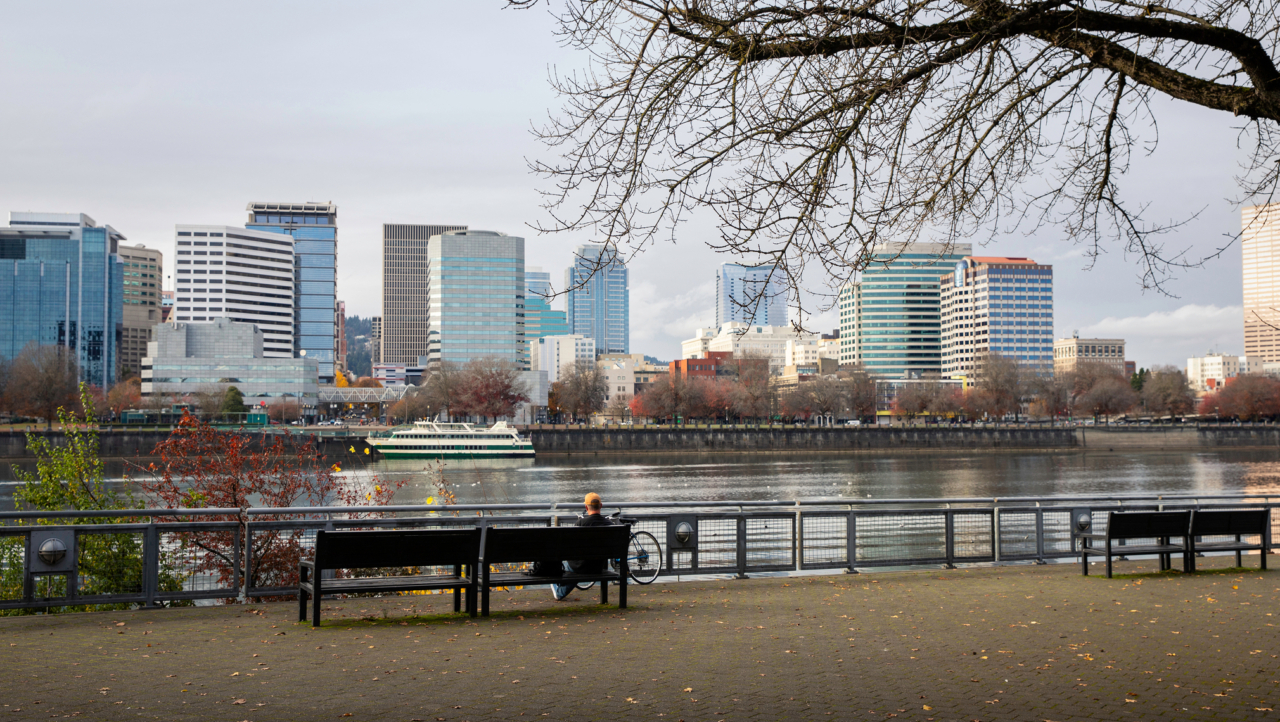Who Pays for Breakage and Damage, Landlord or Renter?
As a renter, you have responsibilities, but your landlord has to ensure habitability.


Written by Grant Brissey on February 28, 2024
A major benefit of renting is that, in most situations, you don't have to fix everything that breaks. That can be a serious relief when, say, water from the unit upstairs starts pouring out of your ceiling’s light fixtures, or your furnace conks out days before a cold front.
But your landlord isn’t always liable for damages or breakage. While you should always consult your lease, local laws or a lawyer for specifics, the following will help you better understand who’s responsible for what when damage happens to a rental unit.
Landlords are responsible for maintaining a ‘habitable’ property
As a tenant, you have the right to habitable living conditions, and your landlord is responsible for making necessary repairs. Generally, enforcement falls to states (find more info from your state) and local municipalities, although the Fair Housing Act may apply if there is discrimination involved
States agree that habitable living conditions include a few basic services: adequate heat, hot water, and plumbing, as well as a “sound structure that does not pose unreasonable safety risks.” If your pipes freeze and then burst, or your hot water tank springs a leak, your landlord is obligated to fix them. Same goes for a broken heat source, any structural damage or failed locks. Landlords are also typically responsible for addressing wear and tear developments.
In short, your landlord has to ensure the rental property meets all local health and safety standards.
Tenants have both rights and responsibilities related to repairs
As a tenant, you’re typically expected to ensure the property stays clean and in good repair, and to flag major issues before they can cause more damage. Here’s a specific list of tenant responsibilities:
1. Maintain the rental property
Tenants are typically responsible for keeping the unit sanitary, which means they should:
- Discard trash
- Prevent mold growth
- Prevent excessive dirt buildup on walls and floors
- Prevent rust, grime or soap scum buildup
- Maintain appliances
2. Prevent excessive damage
In addition to keeping their rental unit clean, tenants should avoid causing damage through negligence or recklessness. Normal wear and tear is expected, but damage that leaves the property in worse condition than when a tenant moved in is not. Many municipalities recognize and enforce tenant liability in the following scenarios:
- Removal of fixtures, including lights, appliances or permanent decorative items
- Damage due to pet policy violations
- Damage caused by fires as a result of negligence or reckless conduct
- Tampering of smoke or carbon monoxide detectors
- Misuse of designated rooms
- Use of the premises for unlawful purposes
- Violation of occupancy requirements
- Blocking of emergency exits
3. Report issues as they come up
Report any issues that may lead to further damage as soon as you spot them, otherwise, you may risk later liability. A small water leak, for example, can eventually cause major damage. Keep a copy of your rental walkthrough checklist for your records so you can avoid any damage charges at the end of the lease. Damage charges outside of normal wear and tear are usually covered by your security deposit.
So who pays for what?
The short answer is: It depends. Most often, three factors come into play:
Causation: Who or what actually caused the damage? Was it the tenant, a guest, pets, external factors like natural disasters, or was it a result of neglect or improper repairs.
Local laws and regulations: These can vary significantly by state and even city or municipality. Laws may stipulate specific tenant and landlord duties regarding maintenance and damage.
Lease: The lease might be the default determinant, unless the lease violates local laws. A comprehensive lease should detail what's damage and what's just “normal wear and tear.” That designation of damage or wear and tear can often identify causation.
What is considered apartment damage?
Let’s look at a few examples of what might be considered damage based on causation:
Tenant notices an obvious water leak from a broken pipe but doesn't report it to the landlord; the water leak eventually causes extensive damage.
“While the landlord would be responsible for repairing the leak, he or she may have a cause of action against the tenant for the cost of any damage attributable to the tenant's negligence,” says Lyndsay Spiking, Zillow Senior Lead Counsel for Rentals & Insurance Services. “Most rental agreements require the tenant to promptly notify the landlord of such things, so there would be a potential breach of contract claim.”
Mold caused by a water leak: Again, this could go both ways. Was the mold caused by an obvious leak that the tenant didn’t make known to the landlord, or was the cause improper ventilation in a bathroom? If you’re using the bathroom as intended and mold grows because the landlord hasn't installed proper ventilation, the landlord would likely be responsible.
Older, lightly stained carpets: This might fall under the designation of normal wear and tear, and as long as the tenant thoroughly documented the state of the carpet upon move-in, they may be able to successfully make that argument.
Newer carpet with big red stain from a spilt half-bottle of Chianti: The causation here is clear, and the tenant might be liable for remedying the damage.
Tenant discovers a rat infestation on the third night of a lease: If the tenant immediately notifies the landlord, responsibility would likely fall to that landlord.
Tenant moves out, leaving an unsanitary unit and a rat infestation: Tenant may be liable in this scenario, as the rats could have been attracted to undiscarded trash and the tenant didn’t alert the landlord in a timely manner.
How to protect yourself in case of rental damages
Document any pre-existing damage or wear
Before you move into any place, do a thorough walkthrough. Take special care with an older home, where the condition prior to your occupancy may be tougher to define. You want to be covered if, say, someone’s painted over trim or previously installed a window that won’t open.
Ideally you’ll do this walkthrough with your landlord or property manager and a checklist. But at the least, ideally before you move in, capture a comprehensive walkthrough of the unit and any outdoor areas with your smartphone video camera. Store that video somewhere you can get it if it’s needed at the end of the lease.
Check your lease
Every situation is unique, but it really always comes down to the lease. That fact makes two things especially important: Read a lease very carefully before you sign it, and don’t hesitate to ask questions about anything that’s unclear.
Here’s a basic set of questions to ask if your lease is unclear on damage responsibilities:
Define who’s responsible for what: Ask who’s responsible for repairs in common situations like appliance breakdowns, plumbing issues like broken pipes, accidental damage, and normal wear and tear.
Determine maintenance obligations: Detail what routine maintenance tasks you're expected to handle (e.g., smoke detector batteries, cleaning filters, yard maintenance) and the consequences of neglecting them. In the absence of lease language covering this, it typically defaults to the landlord, but check those local laws to confirm.
Clarify documentation protocol: Confirm how the unit’s condition will be documented prior to your occupancy (more on that later) and how any damage and repairs should be cataloged.
Establish deductible responsibility: If the landlord's insurance is involved, ask them to clarify if you're ever responsible for any part of the deductible.
Finally, get everything in writing. For due diligence, contact your local housing authority or state attorney general for a landlord-tenant handbook.
For more on renter rights, see Understanding Your Basic Rights as a Renter.
Consider getting a renters insurance policy
Your landlord may require that you carry renters insurance. But even if they don’t, know that their insurance likely will not apply to your belongings if they were damaged in a covered incident. That’s where renters insurance comes in. Although it’s another cost, it’s typically a minor one, and renters insurance policies cover more than just your belongings.
“Some of the other coverages are less well known but also pretty important,” says Spiking. “For example, personal liability: If someone visits, and they get injured during an accident at your place, renters insurance gives you protection from a potential lawsuit or can help pay their medical costs.”
Personal liability coverage may also help cover accidental damage you cause to the property of another — up to the policy limit. Finally, renters insurance includes coverage for additional living expenses, which may help defray costs associated with having to live somewhere else — like a hotel — temporarily if something were to happen to the rental unit and you couldn't live there, Spiking says.
But again, in cases of tenant neglect it may not help — consult your insurance agent to learn more about what your policy covers. No insurance, we should note, will cover intentional damage.
For more specifics on renters insurance, see Is Renters Insurance Worth It?
Find an apartment you’ll love on Zillow
With Zillions of up-to-date listings and filters for your must-haves, it's easy to find your perfect apartment on Zillow Rentals.
Search rentals
